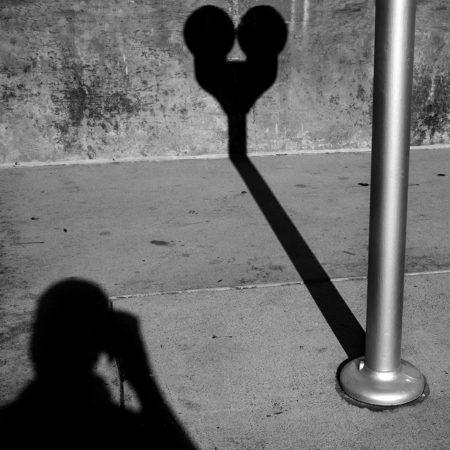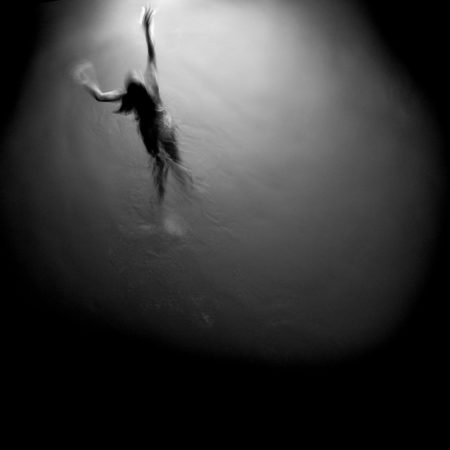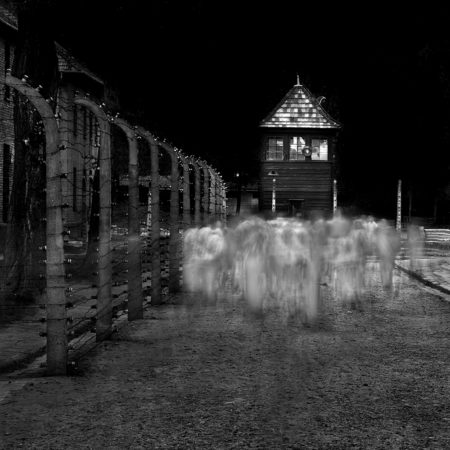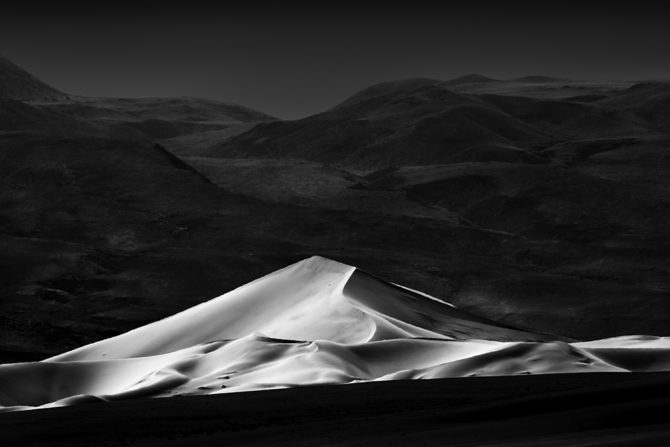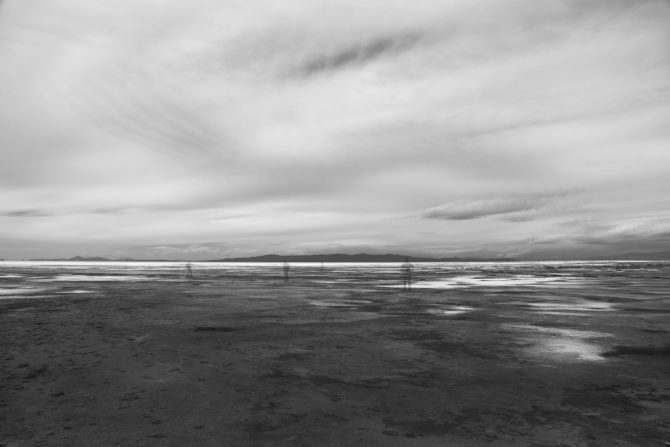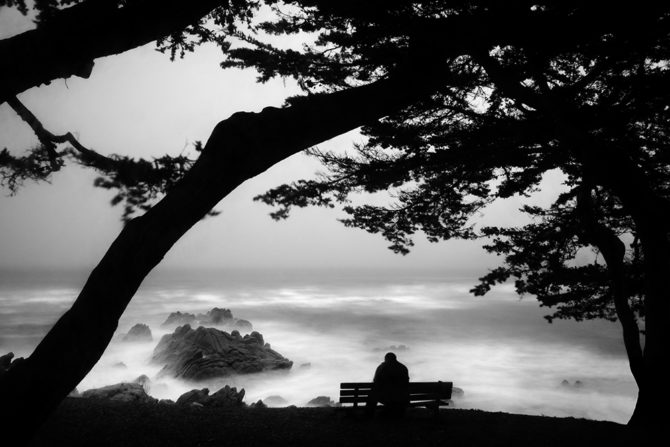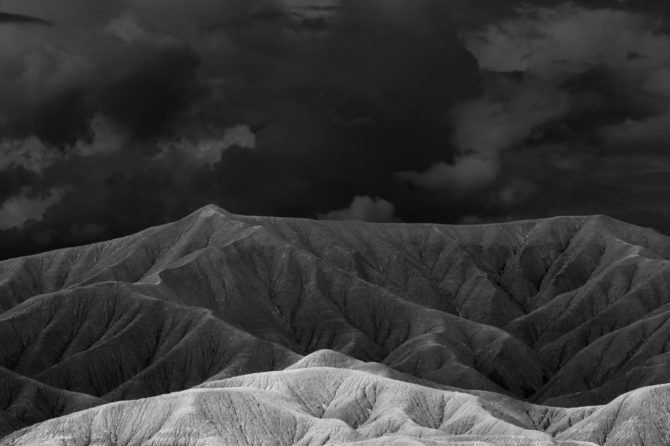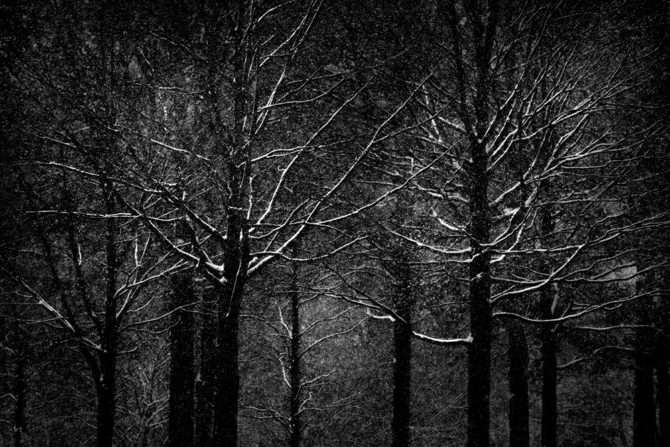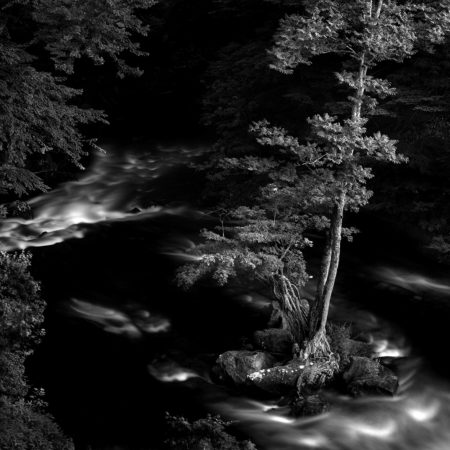Year: 2015
August 21, 2015
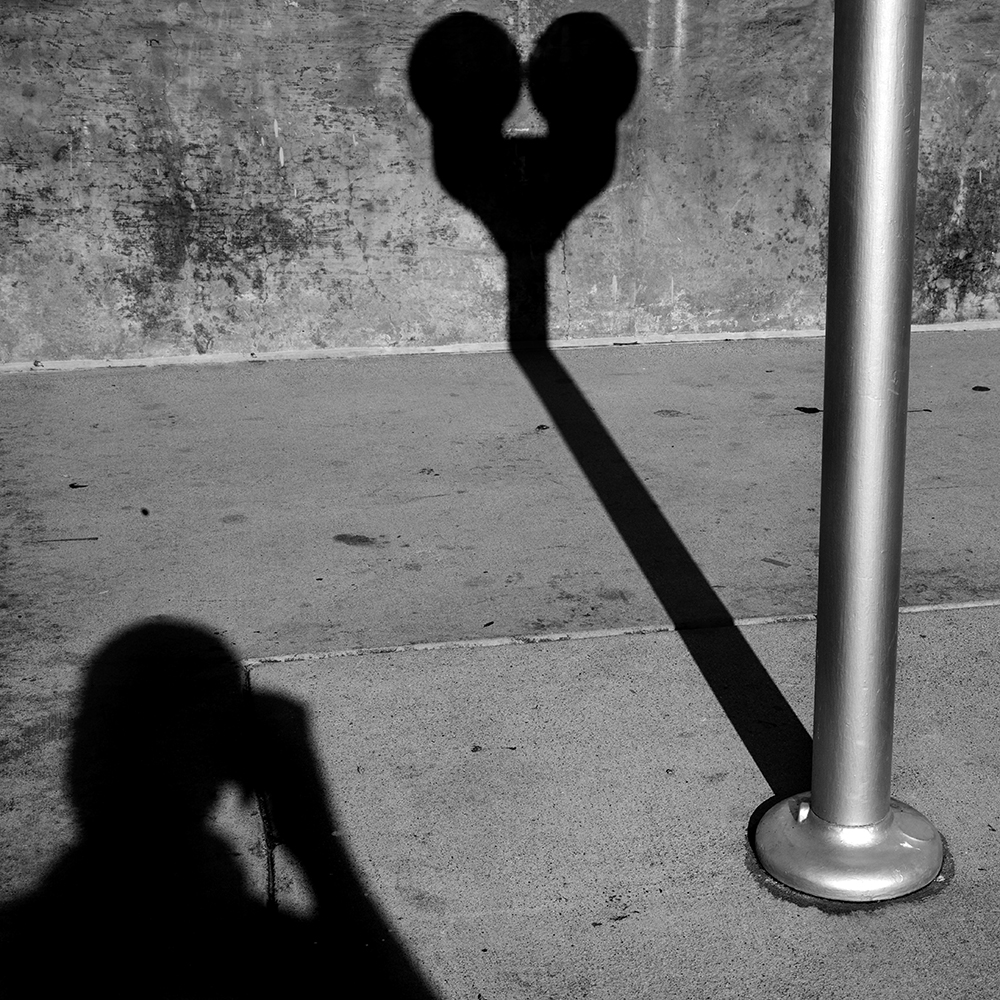
I’ve been driving a U-Haul moving van from Northern Colorado to Portland, Oregon for the last few days and instead of listening to my latest Longmire book on tape, I’ve been doing a lot of thinking…introspective stuff.
I’ve come to realize that I’ve become less and less productive at creating new images and I’m spending more and more time on other peripheral things such as talking about photography, writing about photography and emailing about photography.
I need to get back to doing what I love. I need to do less talking and do more creating.
So forgive me if my blog posts are a little less frequent and my emails are a just little shorter. I plan on shifting my priorities back to what makes me happy and fulfilled, and that is creating new images.
Cole
August 14, 2015

“I realized that I had things in my head not like what I had been taught – not like what I had seen – shapes and ideas so familiar to me that it hadn’t occurred to me to put them down. I decided to stop painting, to put away everything I had done, and to start to say the things that were my own.” Georgia O’Keeffe
“Traveler, there is no path. Paths are made by walking.” Antonio Machado
“And those who were seen dancing were thought to be insane by those who could not hear the music.” Friedrich Nietzsche
“The artist has only to trust his eyes.” Auguste Rodin
“The question is not what you look at, but what you see.” Henry David Thoreau
“You can’t depend on your eyes if your imagination is out of focus.” Mark Twain
“The same sun shines upon the same earth, yet each of us casts a different shadow.” W. E. Dassonville
“The privilege of a lifetime is being who you are.” Joseph Campbell
“It is better to fail in originality than to succeed in imitation.” Herman Melville
“What matters most is how you see yourself.” Unknown
“It is a terrible thing to see and have no vision.” Helen Keller
“Vision is the art of seeing what is invisible to others.” Jonathan Swift
“If you don’t design your own life plan, chances are you’ll fall into someone else’s plan. And guess what they have planned for you? Not much.” Jim Rohn
“To the person who does not know where he wants to go there is no favorable wind.” Seneca
“Your vision will become clear only when you look into your heart. Who looks outside, dreams. Who looks inside awakens.” Carl Jung
“Art is the most intense mode of individualism that the world has known.” Oscar Wilde
“A creative man is motivated by the desire to achieve, not by the desire to beat others.” Ayn Rand
“Creativity is just connecting things. When you ask creative people how they did something, they feel a little guilty because they didn’t really do it, they just saw something. It seemed obvious to them after a while. That’s because they were able to connect experiences they’ve had and synthesize new things.” Steve Jobs
“An artist is not paid for his labor but for his vision.” James Whistler
“Believe in yourself! Have faith in your abilities! Without a humble but reasonable confidence in your own powers you cannot be successful or happy.” Norman Vincente Peale
August 6, 2015
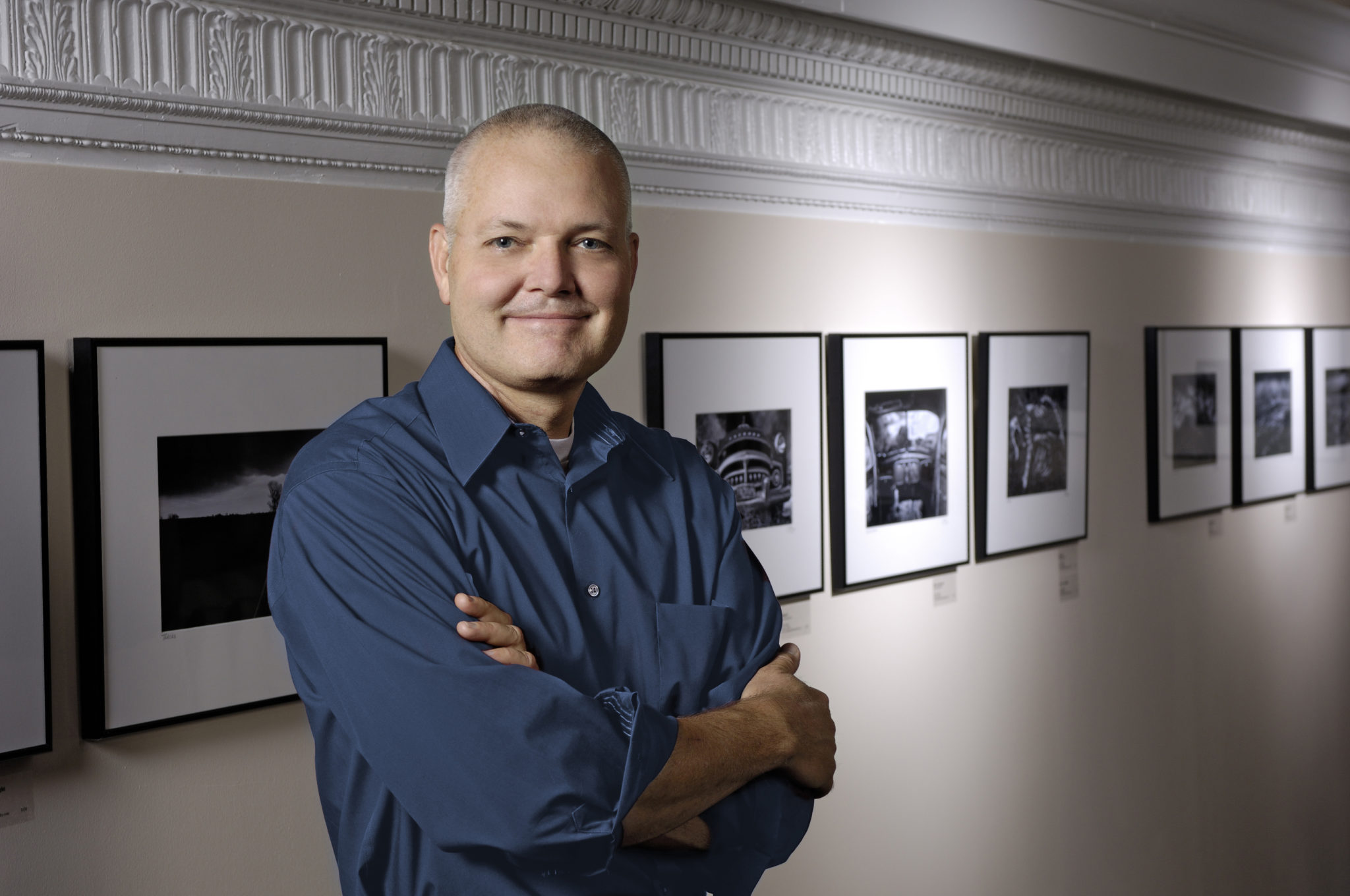
Cole Thompson was one of the featured speakers at the 2014 PSA Conference. We heard so many good things about his talk that we asked him to write an article for the PSA Journal so those who were unable to attend the conference could read some of what he talked about then. Photos © Cole Thompson
Ten Things I’ve Learned in Fifty Years
by Cole Thompson
I picked up the camera after reading the biography of George Eastman as a 14-year-old boy living in Rochester, NY. Before I finished that book, before I had taken my first picture and before I’d ever seen a print come up in the developer…I was convinced that I was destined to be a photographer. I know that sounds silly, but it’s how I felt then and it’s how I feel to this day.
Many people ask me, “But why black and white? You were born into a color world!”

I reply, “No, I was born into a black and white world!” When I was growing up the world was in black and white.
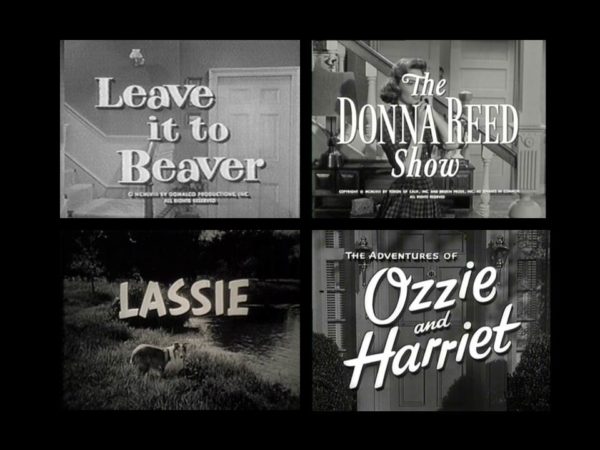
TV was in black and white, movies were in black and white, the news was delivered in black and white, my childhood heroes were in black and white…

…and even our nation was segregated into black and white.
So I photographed in Black and White and perhaps my images are an extension of the world that I grew up in.
As I think about that innocent young boy I once was, I’m reminded of what motivated me to take pictures those 50 years ago; it was for the pure joy of creating.
But along the way I became a little lost and started creating for the wrong reasons: for fame, fortune, accolades and affirmation until one day I realized that photography was not as fun as it once had been. Today I’ve come full circle and have arrived where I started off; I’ve once again discovered how to create for the pure joy of creating.
Here are some things that I’ve learned that has brought me back to loving photography again and creating the best work of my life.
Here are 10 things that I’ve learned in 50 years:
1. Don’t Aspire to Become the World’s Greatest Imitator.
When I was younger, the ultimate compliment someone could give me would be to say, “Your work reminds me of Ansel Adams’ work.” Because he was my childhood hero, I would dream of creating images just like him. I’d imitate his style and sometimes I’d even go to Yosemite and try to recreate specific images!
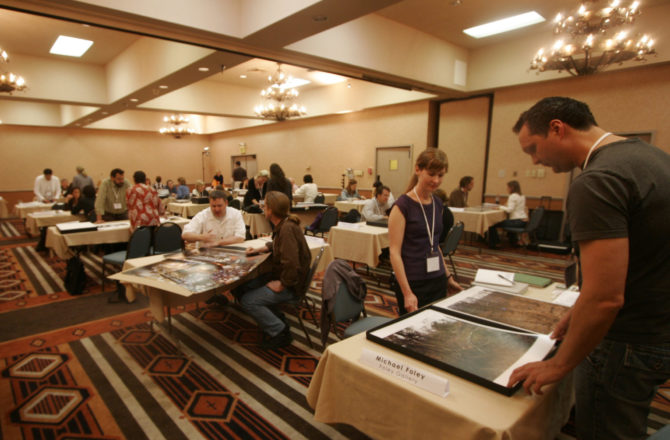
Then several years ago I was attending Review Santa Fe where, over the course of a day, my work was evaluated by a number of gallery owners, curators, publishers and experts in the field.
During the last review of a very long day, the reviewer quickly looked at my work, brusquely pushed it back to me and said, “It looks like you’re trying to copy Ansel Adams.” I replied that I was, because I loved his work!
He then said something that would change my photography and my life: “Ansel’s already done Ansel and you’re not going to do him any better. What can you create that shows your unique vision?”
Those words really stung, but over the next two years the significance of his message sank in. Was it my life’s ambition to be known as the world’s best Ansel Adams imitator? Had I no higher aspirations than that?
I came to realize that I needed to create work that was uniquely mine and not imitative of another. But how was I to do that I wondered? There isn’t a subject that hasn’t been photographed before, so how could I create unique work?
While it’s true that almost everything has been photographed, it has not been photographed through my eyes. We each have a unique Vision and that’s how I can create unique work. The choice was clear: Did I want to imitate or create?
In the end I decided that I’d prefer to create a mediocre original, rather than make a brilliant copy.
2. Vision is Everything
I believe that Vision is what gives your image a soul and it’s what makes your images unique. Great images do not come about because of equipment and processes, but rather from Vision that drives those tools to do wonderful things. What good are great technical skills if you don’t have a Vision worthy of them?
A lot of people have asked me how to go about finding their vision. I’m not sure I can answer that for everyone, but I can tell you how I found mine.
What is Vision?
I desperately wanted to know if I had a Vision, but I had a huge problem. What exactly was Vision and how did I develop it? I researched Vision but I couldn’t relate to the definitions and explanations that I found. Was it a look, a style or a technique? Was it something you were born with or something you developed?
And then there was the nagging doubt: What if I didn’t have a Vision? I feared that it was something you either “had” or you “didn’t have” and perhaps I did not?

And how was I to go about finding my Vision?
With so many unanswered questions and with no idea on how to proceed, I simply forged ahead and did what made sense to me. Here are the steps that I took:
I Sorted My Images into Two Groups. I took my best images, printed them out and then divided them into two groups: the ones I REALLY loved…and all the rest. I decided that the ones that went in the “loved” pile had to be images that “I” loved, and not just ones that I was attached to because they had received praise, won awards or sold the best. And even if I loved an image that no one else did, I still picked it.
I Made the Commitment. I committed that from that point on, I would only pursue those kinds of images, the ones that I really loved. Too often I had been sidetracked when I chose to pursue images simply because they were popular with others.
I Practiced Photographic Celibacy. I started practicing Photographic Celibacy and stopped looking at other photographer’s work. I reasoned that to find my Vision, I had to stop immersing myself in the Vision and images of others. I used to spend hours and hours looking at other photographer’s work and would find myself copying their style and images. When I looked at a scene I didn’t want to see it through another photographer’s eyes, I wanted to see it through mine!

I Questioned My Motives. One of the hardest things I did was to question my motives and honestly answer some hard questions: Why am I creating?, Who am I trying to please?, What do I want from my photography?, How do I define success? It seemed to me that Vision was something honest and that if I were going to find my Vision, I had to be honest about the reasons I was pursuing it.
I Stopped Caring What Others Thought. I made a conscious decision to stop caring what others thought of my work. I recognized that in trying to please others, I was left feeling insecure and empty. I reasoned that at the end of the day it was just me, my work and what I thought of it. As long as I cared what others thought, I was a slave and could never be free.
What I Discovered. I really was proceeding blindly, but I believed that if I listened to my own desires, pursued what I loved and eliminated all other voices…I would learn something about my Vision. I did this for two years and there were many times that I became completely discouraged and felt like I was failing. I’m not sure what I expected to happen, perhaps I thought I’d have a revelatory experience where my Vision would suddenly appear in a moment of inspiration. But that didn’t happen.
And then one day it simply occurred to me that I understood…I understood what my Vision was. It came in an anti-climactic and quiet moment of understanding, and after all of that worrying and angst…it now seemed so incredibly simple. Vision was not something I needed to acquire or develop, it had been there all along and all I had to do was “discover” it.
Vision was simply the sum total of my life experiences that caused me to see the world in a unique way. When I looked at a scene and saw it a certain way…that was my vision.
I also learned that Vision is not a look or a style. It does not require you to focus on one subject or genre and following your Vision will not make your work look all the same. Vision gives you the freedom to pursue any subject, create in any style and do anything that you want.
3. Don’t Compare Your Work to Others, Art is not a Competition
I noticed that when I compared my work to other photographer’s work, it caused me to have doubts about my abilities and left me deflated. All I could see were their strengths and my weaknesses, which was an unfair comparison.
It’s good for me to periodically remind myself of a few things. If my goal is to produce the best work that I can, then it does not matter what other photographers are doing. As my mother used to say, “Cole, you just worry about Cole.”
Art is not a competition; someone does not have to lose for someone else to win. I am not competing against others…I am trying to be better than myself.
4. Simple is Better than Complicated
I have embarked on a mission to simplify my photography by disposing of everything that is not absolutely necessary to create the image. I have simplified my equipment, my post processing, my matting and framing. I now work with a camera, tripod, three lenses and some filters. I use Photoshop and six of its tools. I use a printer with stock inks.
If a piece of equipment or a process is not necessary, I get rid of it. For too long I was a technophile who almost worshipped my equipment and at times it seemed as though my equipment was more important than the image itself!
I’ve adopted this “simple” approach as a way to focus myself on the things that really do matter: my Vision and composition. Some people feel that they cannot produce a good image with just the simple basics, but I disagree. From my experience the basics can produce incredibly beautiful images that most people would envy.
I’m not saying that there aren’t some gadgets and programs that would improve the quality of your work, but by far the largest improvement any of us can make is to improve ourselves before our equipment. I tell people that if there is a place for some of these extras, it comes after our Vision and composition has been mastered. Simple is always better than complicated.
5. If You’re Not Passionate About Your Project, Choose A New One.
Sometimes people ask me what they should do when they find it hard to get motivated on their project. My answer is, “find another project.” For me, a successful project must have two ingredients: Vision and Passion. If I don’t feel these, I know the project is doomed; it will be a chore to work on and that lack of passion will be felt by the viewer.
Many feel that the key to a successful project is to have a unique subject, an exotic location or an interesting technique. And while those qualities may help, only Vision and Passion can ensure success. When you have a Vision and Passion for your project, that energy and conviction will be felt through your images.
After I created my Ghost series at Auschwitz, many people suggested I apply the ghost theme to other locations. The idea sounded logical: the Auschwitz series had been well received and so why not leverage that popularity by using the same approach at other locations? So I started to work on “The Ghosts of Great Britain” where I created ghosts at English castles. But the project fell flat because the images were not compelling and it felt gimmicky to me.
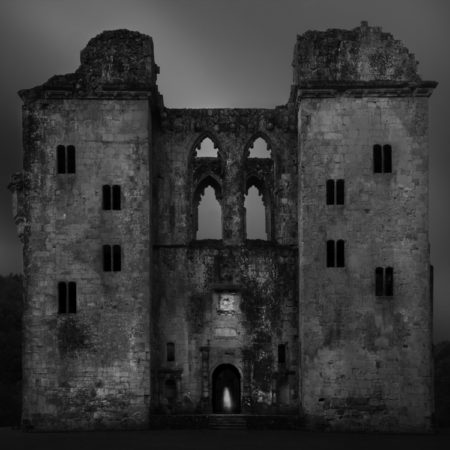
So what went wrong with the project? Simple, it lacked Passion. At Auschwitz I felt inspired to create those images and I had a Vision for the project. I gave no thought as to how the series would be received and in fact I didn’t care!
However “The Ghosts of Great Britain” was completely contrived and calculated to be popular. I did not feel that same Vision or Passion for the project and it failed. I scrapped the series and only kept the one image above. This was a great lesson for me and a mistake that I will never make again.
6. Don’t Follow Any Photographic Rules
What photographic rules should you follow? None, unless you want to create average images that thousands of other people have created before you. Ansel Adams said, “ The so-called rules of photographic composition are, in my opinion, invalid, irrelevant, immaterial.”
I’ll go one step further and say, “In my opinion following the rules of photography is actually harmful because they get in the way of developing independent creativity and Vision.”
Creating compositional rules is an attempt to distill the creative process into a series of guidelines that, if followed, will produce a great image. Do you remember the old “paint by numbers” kits? We were promised that if we’d simply follow the rules by using the proper color, and paint that into each numbered area, and stay within the lines…we would have a masterpiece!
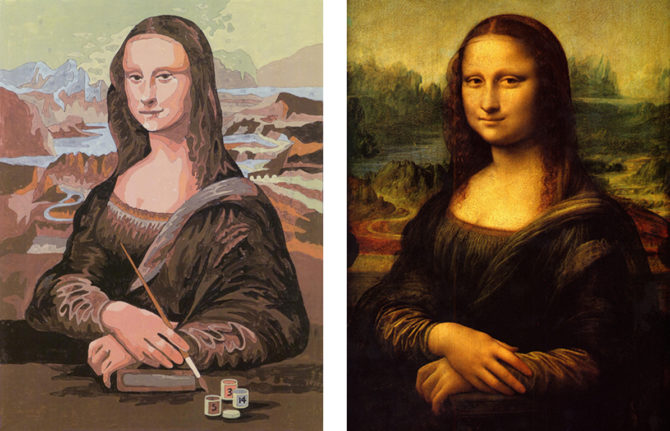
Well, maybe a “competent” painting, but certainly not a masterpiece!
Do you remember IBM’s Deep Blue computer? It was programmed to play chess and it beat the world champion chess player, Garry Kasparov. Do you think that if we were to program the rules of photography into Deep Blue and take it to Yosemite, that it could beat Ansel Adams? Of course not, because composition is about seeing and feeling, not about following rules. And the irony of these rules is that they are supposed to help you learn to be creative, when what they actually do is cause creative dependency.
When I approach a scene, I simply look and see and feel. I compose instinctively until the scene feels right, without a single thought about the “rules.” And if the composition doesn’t feel right, I change it. In the end all I care about is that the image “feels right.”
What a simple and empowering concept; to see and feel for yourself rather than following rules. Creative people already know this secret, that
great art comes from within and is not found in a set of rules.
7. Don’t Listen to Other People’s Advice
Do you know anyone who feels free to offer advice about your images? They often say something like this: “Here’s what I would do…” or “If this were my image I’d…” The problem with other people’s advice is that it doesn’t come from your Vision, but rather theirs.
People will often send me an image and ask what I would do to it and here’s how I respond: If you were to follow my advice, after a while your images would start to look like mine! Is that really what you want? Wouldn’t you rather find your own Vision and create your own masterpieces?
So much of the advice people offered me never felt right and I was torn between respecting the recommendation of experts or following my own intuition. In the end I decided that only by pleasing myself could I create my best work; and that no matter how expert someone was, they were not an expert about my Vision.
Follow my advice and don’t listen to other people’s advice!
8. Use Photoshop However Works Best for You
I use a very simple workflow and for years I would never let anyone see me work because I thought I was doing everything wrong. As I listened to other photographers talk about their sophisticated processes, I was embarrassed to let them see my rudimentary ones. What if they started talking to me about layers or curves…I didn’t use or even understand them!
With time I came to the realization that photography is not about the process, it’s about the image. Nothing else matters. There are many ways to use Photoshop and I doubt that many photographers use more than a small percentage of its many tools. There is no right way or wrong way to use it and not one workflow will be right for everyone.
My procedure works for me and I’d like to share it to illustrate a point: You don’t need to know a lot about Photoshop or have a complicated workflow to produce beautiful images. I use only six tools in the processing of ninety-nine percent of my images.
1. RAW Converter—I use Photoshop’s RAW converter to set my image to a 16 bit, 360 ppi, 10×15 TIFF file.
2. B&W Conversion tool—I like Photoshop’s b&w conversion tool and play with each color channel to see how it affects the different colors of my image.
3. Levels—One of the most basic secrets to a great b&w image is to have a good black and white. I use Levels to set the initial black and white point and I use the histogram to judge this. You cannot trust your eyes and so throughout my processing I keep my eye on that histogram to maintain a true black and white.
4. Dodging and Burning—This is where I do most of my processing and where I have the most fun! I feel most at home with dodging and burning because that’s how I worked in the darkroom. I use a Wacom tablet to dodge and burn, which gives me precise and natural control.
5. Contrast Adjustment—After I have the image looking great on screen, experience has taught me that the print will look flat, and so I add some contrast. A monitor uses transmitted light and a print uses reflective light. That means it will take a lot more work to get your print to look as snappy as it does on the monitor. Contrast helps a great deal.
6. Clone Tool—I use the clone tool to spot my images. Cloning is so much better than the old days when you had to spot every single print and your mouth tasted like Spottone all day!
The point I am trying to make is that a workflow need not be complicated to be effective. I doubt a workflow could be simpler than mine! What’s the best way to use Photoshop? Any way that works for you!
9. Technical Skills and Equipment are not the Key to a Great Image.
Technical skills and equipment are not nearly as important as we think! If I had to choose between the best equipment in the world and no Vision or having a Kodak Brownie and my Vision… I’ll take the Brownie.

I’m often asked, “What’s the best camera, lens or paper? My answer is always the same: There is no “best.” Most cameras are excellent, almost all lenses are better than their masters and choosing a paper is simply about personal preference.
It’s easy to buy into the notion that the right camera, lens, accessories, plug-ins, printers or paper will transform our ordinary work into extraordinary images. However, from my experience great images are rarely great because they are technically perfect or printed on the right paper.
Put more bluntly: I don’t think it really matters which equipment or paper you choose because they are not the critical component in a great image.
I believe a great image is created mostly from your Vision and that equipment and technical skills play a much smaller supporting role than we generally think.
Vision is what makes an image great and what drives our equipment and processes to do great things.
10. Define Success for Yourself.
I was reading about how the movie “The Beaver” failed miserably at the box office. The article talked about how Jodi Foster, who starred in and directed the film, had faith in the film’s message, and when asked about the financial disaster said, “I’ve learned…that if you gauge your self-worth at the box office you will be a very sorry person.“
How do I, as an artist, gauge my self-worth? Do I base it on how many “likes” I get on some social network? Or do I base it on sales, reviews, the galleries I’m in or the awards I receive? For many years I never stopped to ask myself what success meant to me, I just assumed it meant all of those things.
But as I started to achieve success, I noticed that I wasn’t any happier than when I was “unsuccessful” and in some ways I was less happy. Sure it felt good to have my fifteen minutes of fame, but in the morning it was just me, my art and what “I” thought of it.
So I set about to define success for myself and to identify what I wanted to achieve with my photography. It turns out that my definition was quite a bit different than the one I had been chasing for so long! It turns out that I had been trying to achieve something that I really didn’t want.
This lesson learned was second only to the lesson about Vision: Define success for yourself before you go chasing it.
Conclusion:
Most of what I have learned in these 50 years of photography has less to do about photography and more to do about life.
It’s about finding and following your Vision no matter what others think or say. It’s about defining and achieving success for yourself. It’s about being proud of what you do and loving what you create.
It turns out that photography and life have a lot in common.
 Any mention of products or services in this article or anywhere else in the PSA Journal does not constitute an endorsement or approval of those items.
Any mention of products or services in this article or anywhere else in the PSA Journal does not constitute an endorsement or approval of those items.
This article and photographs are reproduced with permission from the August 2015 issue of the PSA Journal, the official magazine of the Photographic Society of America, Inc. (PSA). For information on PSA membership, please write to PSA Headquarters, 3000 United Founders Blvd., Suite 103, Oklahoma City, OK 73112-3940.”
July 31, 2015

Searching
The solution? I returned the camera.
The 5DSr is not the right camera for my long exposure work.
Cole
July 31, 2015
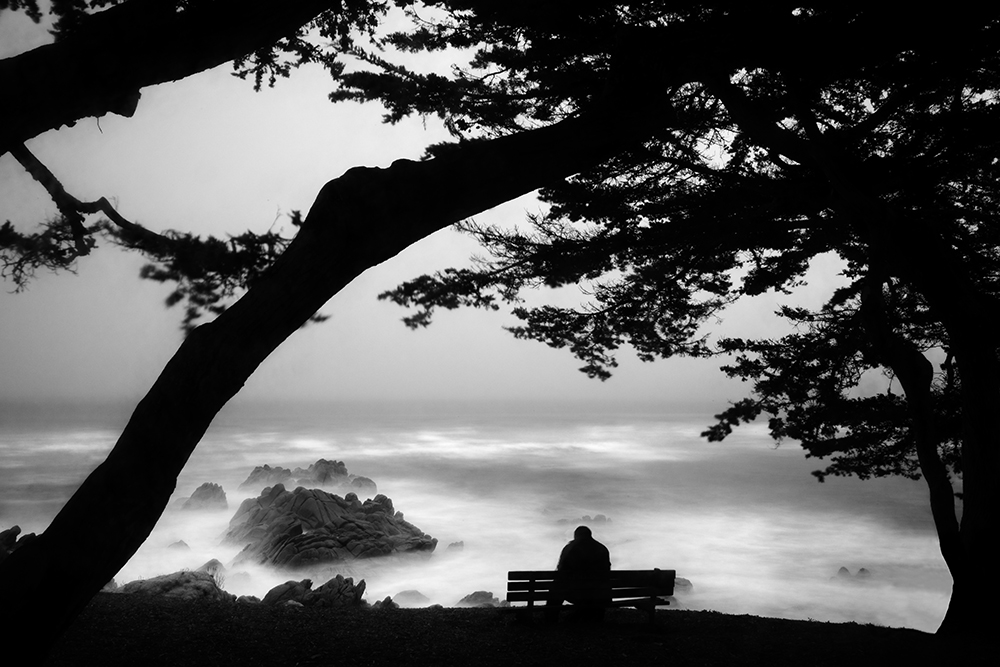
Lone Man No 30
When I speak to camera clubs, I’ve noticed that most of them have some sort of monthly competition and/or the critiquing of images. And if you’ve read my blog for very long, you know that I am not a fan of either.
Starting with my article “Art is Not a Competition” and ending with my “Why I Don’t Critique Other People’s Work” I’ve argued that neither competition or critiquing is conducive to developing one’s own Vision.
Instead I’ve made the case that rather than learning about what others think of your work, you should decide how you feel about it. And that can only come from having a Vision and then honestly appraising how well you expressed that Vision.
Recently, after one of my presentation and during the Q&A session that followed, someone asked me this question (paraphrased):
“So based on what you’ve said tonight, I’m guessing you would not agree with our club’s monthly competition and critiquing of images?”
Wow, what was I going to say? I had met with the club’s executive committee earlier that evening and had learned about their many well organized activities, which included those monthly competitions and critiques. These were nice people, good people, sincere people who believed in what they were doing.
In a split second I had to decide how to answer that question: should I avoid giving offense by offering an artful “non-answer” or should I tell the truth?
I told the truth.
As I stood there expressing my opposition to competitions and critiques, the thought occurred that I should also offer an alternative. And so here is my suggestion to camera clubs as an alternative to competitions and photo critiques.
Once a year have each person bring an image that they really love and have them explain the story behind the image.
- How they came to create it.
- Did they have a Vision for that image, and if so, when did it emerge?
- Have them talk about their creative process.
- Have them explain where they feel that they hit or missed the mark.
- Have them tell the group why they love this image (this is the most important item!)
And then let the audience ask questions and make supportive comments. Instruct the audience not to discuss the technical aspects of the image or ask technical questions and most importantly, refrain from giving advice or explaining how they themselves would have created this image.
In a sense this would be a “show and tell” that focuses on what the person intended and how they feel about their work, rather than what others think or would have done.
Initially some may find this approach challenging, because they may not feel that they have a Vision, while others may want to ask technical questions and offer suggestions. But with a good moderator and some practice, I think that it would be beneficial to focus on the creator and their Vision.
If you think this idea has merit, please suggest it to your club!
Cole
July 24, 2015
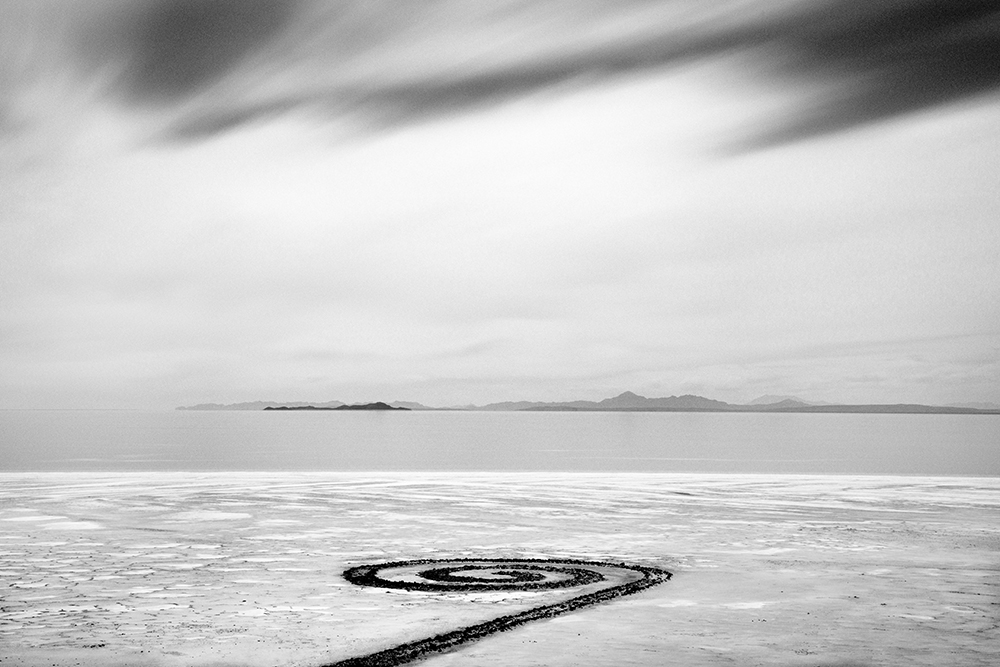
Spiral Jetty
Sometimes it seems that everyone is either an expert or a critic! Show your work to 10 people and you may well end up with 10 different opinions about your image. Why? Because everyone has an opinion.
So who should you listen to when it comes to your images? Family, friends, art experts, gallery owners, curators, MFA’s, other successful photographers? Who?
My suggestion is that you ignore all criticism, praise and advice and listen only to yourself. Why? Because other people’s comments about your image reflects their tastes, their ideas and their Vision. So no matter how well intentioned or how much of an “expert” they are, their advice is going to miss the mark when it comes to your Vision.
We all know how damaging harsh criticism can be; it can discourage, demotivate and cause you to doubt your potential. But even constructive criticism delivered in a kind and gentle way can mislead you and take you off track. That’s because others don’t know your Vision of the image, only you know that.
I was once told that I should not center “The Angel Gabriel.” At first this advice caused me to doubt my Vision and I actually tried to re-crop the image off center. It was a disaster because that was not how I saw the image. Right or wrong, for better or for worse, centered was the way I see Gabriel.

Strangely enough, I also find that praise can be disruptive to Vision. Praise sounds so sweet and we so want to believe it, but it can take us off track. There are many images that I’ve pursued but did not love simply because they generated praise. Praise is addictive and hard to ignore, but you must for the same reasons you should ignore criticism.
There was a time in my photographic life that I would ask people what they thought about my work. Why? Because I didn’t know where I was going and I mistakenly thought I could find the answers by asking others. I could not.
There’s an infinite number of voices out there and even if you had the time to listen to all of them, that would not help you find your Vision. That can only come from a great deal of hard work and solitary introspection. There is no other way.
So how do I view criticism, praise and advice? I try to be appreciative of the person’s sincere intentions but take their advice with a grain of salt and do my best to not let it sway my own opinion of my work (for good or for bad). Only I know my Vision and how closely I hit or miss the mark, and for that reason I believe that my opinion is the only one that matters.
When I see people asking for advice on their images, it suggests to me that they may not have found their Vision. And when you have not found your Vision, you are uncertain and need advice and reassurance from others.
Find your Vision and ignore criticism, praise and advice.
Cole
P.S. If you need help finding your Vision, here is the story of how I went about finding mine.
July 24, 2015
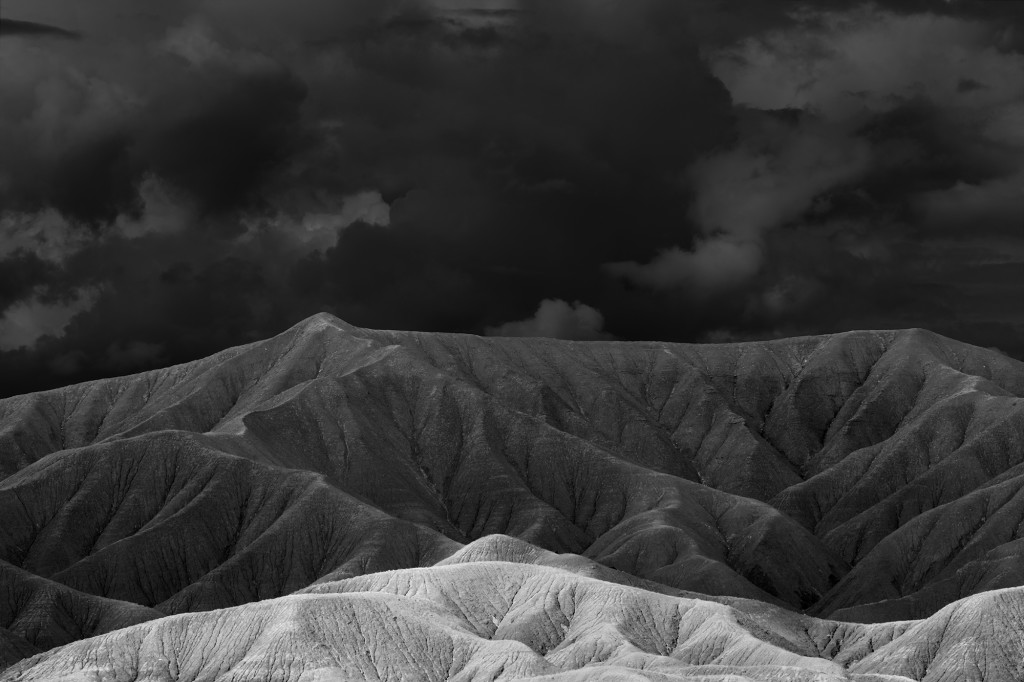
Overshadowed
I’ve returned from my first outing with my new Canon 5DSr and wanted to report back on what I thought of my first images.
The image above was shot at 1/80 of a second and I was impressed with the quality. I was able to blow it up much larger than images from the 5D Mk III and have it hold its detail. I am happy with the quality of this image.
The next image is from the Spiral Jetty on the Great Salt Lake, this image was shot at 240 seconds:
Spiral Jetty
The quality of this image was very disappointing. I opened the RAW file and it was so noisy that I didn’t think that I could salvage this image. By using the dust and scratch filter in Photoshop and by adding grain, I was able to make this image “acceptable.”
I suspected the noise came from the long exposure and I was in fact worried about this going in. The larger number of pixels packed into the same area means that the pixels are smaller and more prone to noise, especially during long exposures. But I didn’t expect this poor of a result.
I then found the same image that I had shot at 120 seconds and compared a blown up section of the two:

240 seconds
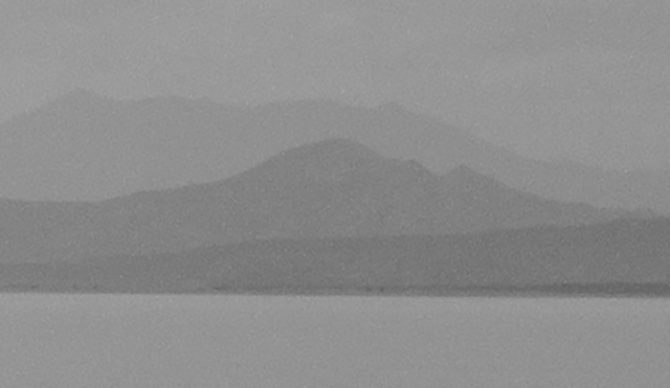
120 seconds
.
The noise at 120 seconds is reasonable while at 240 seconds the noise is completely unacceptable. I only have a few shots to judge this by, but all of my longer exposures have this noise and so I’m sorry to report that my first results with the 5DSr are disappointing from a long exposure perspective.
I will do some formal testing to see how exposure times affects noise levels. As I learn more, I’ll let you know what I find. And if you know something about this issue, please share it with everyone.
Cole
July 10, 2015
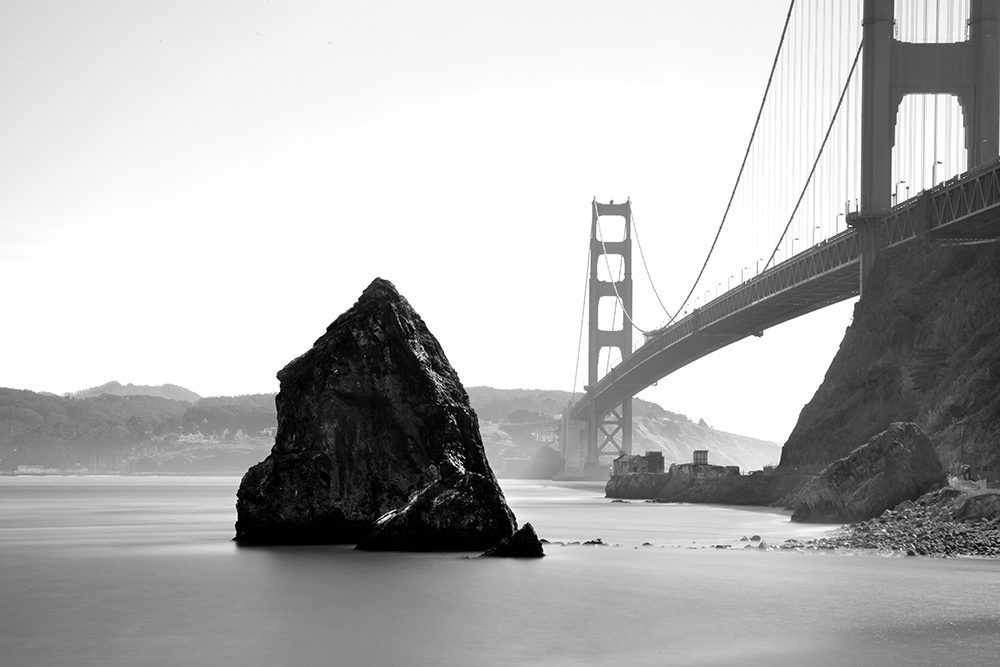

(Monolith No. 50 – NOT created with the Canon 5DSr!)
I’m on the road in Utah and Nevada with my 5DSr and I wanted to report in with some first impressions. Unfortunately I cannot post any images until I return home.
The new camera looks, feels and handles like the 5D Mk III and so I was able to get up to speed relatively quickly. That was nice. However to take full advantage of the many new features, I will have to spend some time going through the menus. As always, the number of features is overwhelming.

There are two new features that immediately caught my eye and got me excited for long exposure work, they are:
Delay After Mirror Lockup: You can set the shutter to trigger after the mirror has flipped up and settled down, making sure the vibrations are gone before the shutter opens. I have mine set to 1/2 second.
This means that mirror lockup can now be a one button press just like a regular shutter! I cannot tell you the number of times I had forgotten to turn off the old two-button mirror lockup and then pressed the shutter once thinking I was taking a picture, when I was not. This new feature will help avoid that mistake.
Bulb Timer: You can now set the length of your bulb exposure in the camera! No more using your watch (and forgetting where you started) and I can now ditch the digital kitchen timer that was always going off in my camera bag just as I was going through security.
Now let me combine these two features and show you why I think this is so great for long exposures. I can now press the shutter button once and the following occurs:
- The mirror flips up and settles down
- A half second later the shutter opens
- The shutter stays open for as long as I’ve programmed it for
- The shutter closes by itself
I can still choose to shoot with a cable release, but now if I forget to bring one, lose or break it, I can still shoot long exposures. I had this problem on Easter Island when both of my cable releases went bad and I was really in a pickle.
These new features means that I no longer “need” a remote shutter release (although I still choose to use one for convenience) but the important thing is that I’ll never be stranded like that again.
One issue Canon did not address is the light entering into the camera through the eyepiece which caused internal reflections on the left and right sides of the 5D Mk III images. I had suggested to Canon that they put a small shutter on the viewfinder that automatically triggered during long exposures…but they didn’t.
To address this I had been using a hat to cover the camera during exposure, but in wind this didn’t work too well. So I build a “flap” that mounted to the hot shoe:

Unfortunately the flap doesn’t seal well enough around my Hoodman HoodEYE eyecup and so I ended up using the hat trick again. I’ll need to work on this contraption some more.
Note: Many people point out to me that Canon provides a small viewfinder block that you can slip into the eyepiece. Unfortunately this block does not work with the Hoodman HoodEYE installed and the eyecup is required to get an accurate long exposure meter reading.
Summary: I purchased the 5DSr so that I could print my images larger and so it was an unexpected treat to find some new features that makes long exposure work easier. I like these new features very much!
I’ll not know what the images look like until I get home. I’m curious how the new 50mp sensor does with noise during long exposures since I found the Mk III to be noisier than the Mk II.
Cole
July 3, 2015
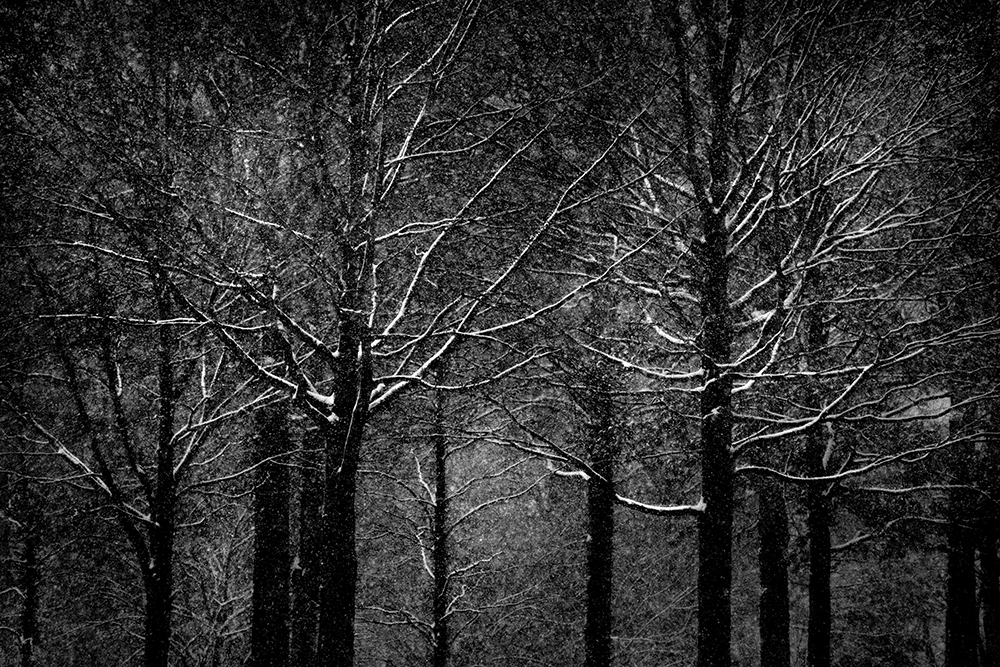
Blizzard – Washington DC
“Blizzard” is a favorite image of mine and yet it’s never been very popular. I often wonder about this; is the image only special to me because of my experience creating it or is it because seeing it on an electronic screen just doesn’t do it justice?
Here is the story behind the image:
It was springtime and I was headed to Washington, DC with appropriate spring clothing and my photo gear. I was anxious to create some new images, however once I arrived a late snowstorm rolled in and my “appropriate clothing” soon became inappropriate. In fact, calling it a snowstorm is an understatement, it was a blizzard.
It was 20 degrees but hadn’t started snowing and so I decided to go out to photograph. Here’s a self-portrait I created that evening:
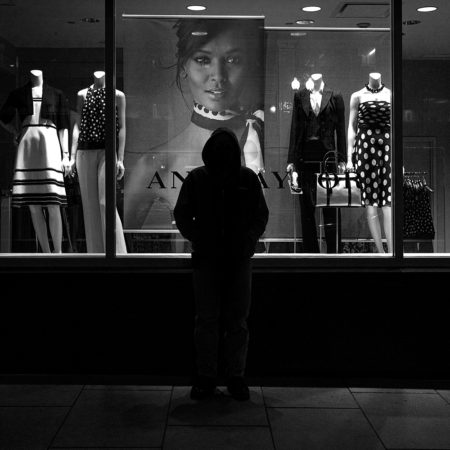
Self Portrait at 20 Degrees – Washington, DC
As I arrived at the National Mall it started snowing heavily and soon I was the only one on the Mall. It was eerie feeling so isolated in the middle of a city and it being so quiet that the only sounds I could hear were the crunch of my shoes and sound of snowflakes hitting my face.
I was so poorly dressed for the weather, wearing only a hoodie with no hat or gloves, that my hands were soon frozen and I feared frostbite. But as I prepared to return, I saw this scene and just had to have it. However the image was easier envisioned than executed as my hands were numb and failed to respond. It was painfully difficult to work the camera controls, but I was able to get this shot which I called “Blizzard.”
I started walking the several miles back to my hotel but soon realized that I could not make it without thawing out my hands and warming up. Unfortunately it was late and I couldn’t find anything open. But then I saw what appeared to be a government building with a large lit lobby and security guard. I decided to go in and hoped they would take pity on my situation and allow me to warm up for a few minutes.
I entered the lobby of the Federal Deposit Insurance Corporation and fortunately the guard who was to my right was preoccupied, so I went to the lobby on the left to shake off the snow and recover. But after only a few minutes the security guard discovered me, and apparently thinking I was a homeless person, headed my way with a loud “Hey! What are you doing in here!” It wasn’t really a question, but an accusation.
The guard was a very large woman and it was clear that I was no match for her! I tried to explain my plight but she would hear nothing of it and I was physically escorted back into the hostile world by the scruff of my neck. Fortunately those few minutes of stolen warmth were enough to sustain me and I did reach my hotel without permanent damage to my shutter finger!
I’m glad I stuck it out because I was able to create an image that I love, and I always tell myself that if I come home with just one good image, that my trip was successful.
“Blizzard” is a subtle image and viewing it on a monitor just doesn’t do it justice. As I write this blog I’m looking at a print and wishing that you could see it. I’ve printed it on Premier Platinum Rag which is a semi-gloss stock that you use matte inks with, which makes the blacks very flat and gives the highlights the most wonderful platinum sheen.
No matter how good an image looks on screen…it’s a revelation to hold a real print in your hands.
Cole
P.S. In a very small way I felt the indignity of being homeless. Here I was, harming no one and simply trying to stave off frostbite when I was treated like a thief and interloper. I know there’s always two sides to every situation, but this experience made me think about the plight of the homeless.
June 19, 2015
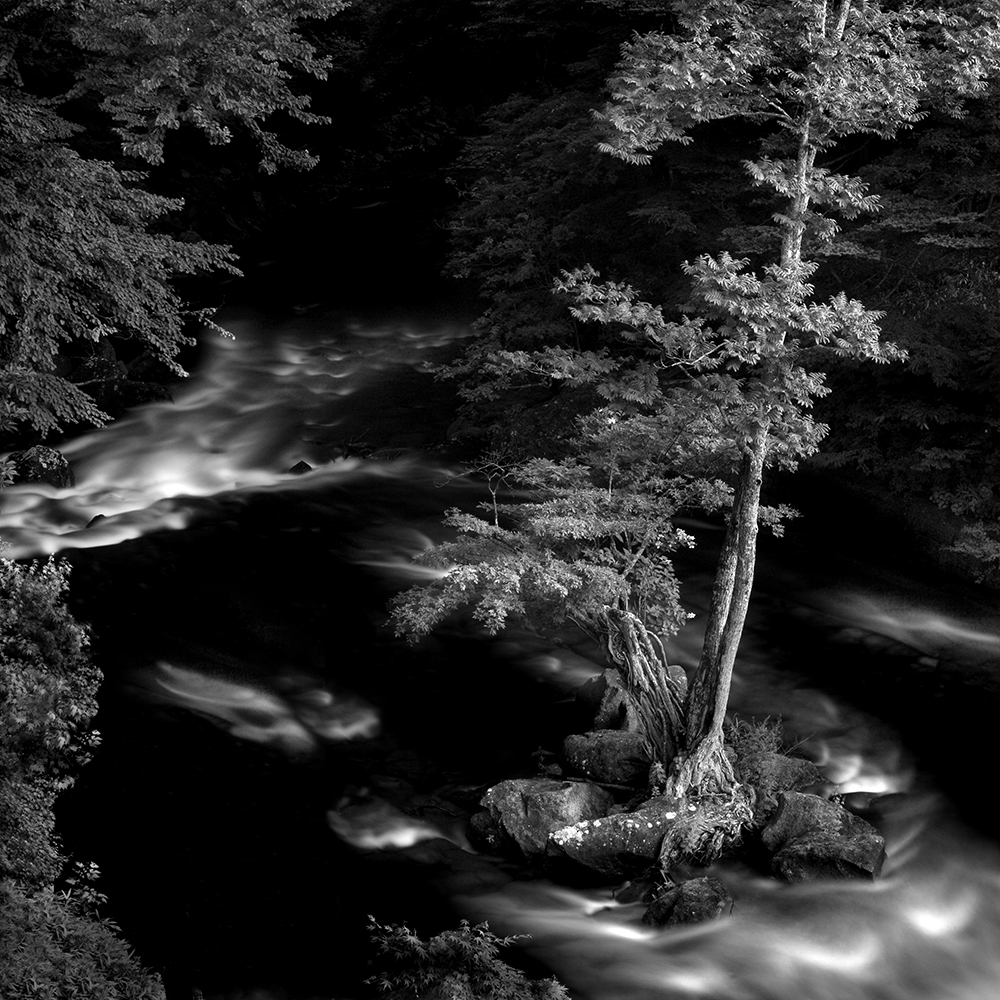
(Isolated – Chuzenji-ko, Japan)
Hello Salt Lake City and Las Vegas, I’m coming to speak!
What will I be speaking about? Black and White and Vision, of course.
If you live in the area, I’d love to meet you!
.
Nevada Camera Club in Las Vegas
Date: Friday, July 10th, 2015
Time: 7 pm
Location: Nellis Masonic Lodge #46
Address: 2200 West Mesquite Ave., Las Vegas NV 89106
.
Wasatch Camera Club in Salt Lake City
Date: Thursday, July 16th, 2015
Time: 6:30 pm
Location: Salt Lake Public Library
Address: 210 East 400 South, Salt Lake City, UT – 801-524-8200
.
My presentation is 75 minutes long and I’ll showing lots of images, telling lots of stories (some of which are even true) and talking about a lot of things including:
- Vision
- Passion
- Why B&W Appeals to Me
- What I Look for in a B&W Image
- My Conversion from Photographer to Artist
- Copying Ansel Adams
- My Vision Epiphany
- What is Fine Art?
- The Role of Equipment and Processes
- Listening to Other’s Advice
- Asking Others for Advice
- Simplify
- Photographic Rules
- Cole’s Rule of Thirds
- Photographic Celibacy
- How Long do Projects Take?
- Some Before and After Images
- My Six Photoshop Tools
- Always Stop!
- Comparing and Competing
- How I Choose a Project
- Be Open to New Possibilities
- How I Found My Vision
- Why do I create?
- How to Make Money From Your Photography
- And Many Stories From My Portfolios.
Whew…all this in 75 minutes!
And at the end, I’ll be giving away three prints.
I do hope that I’ll get a chance to meet you.
Cole

